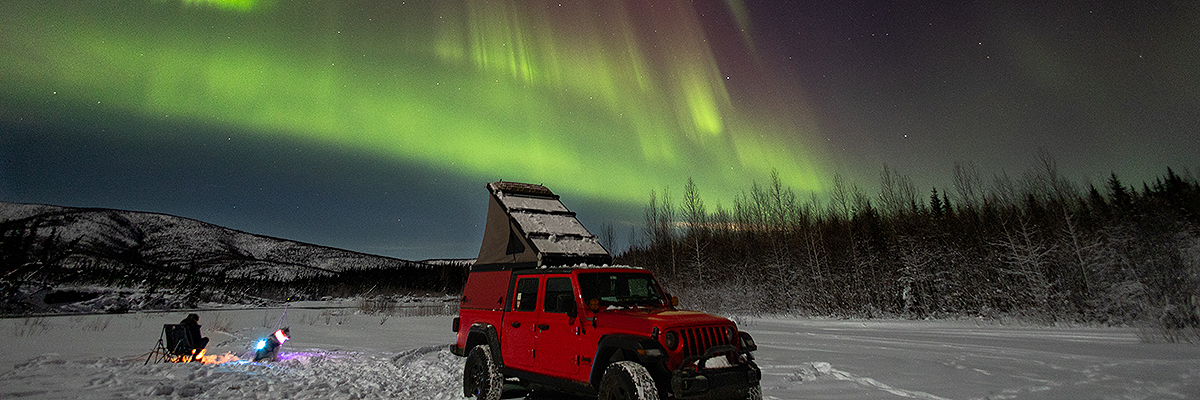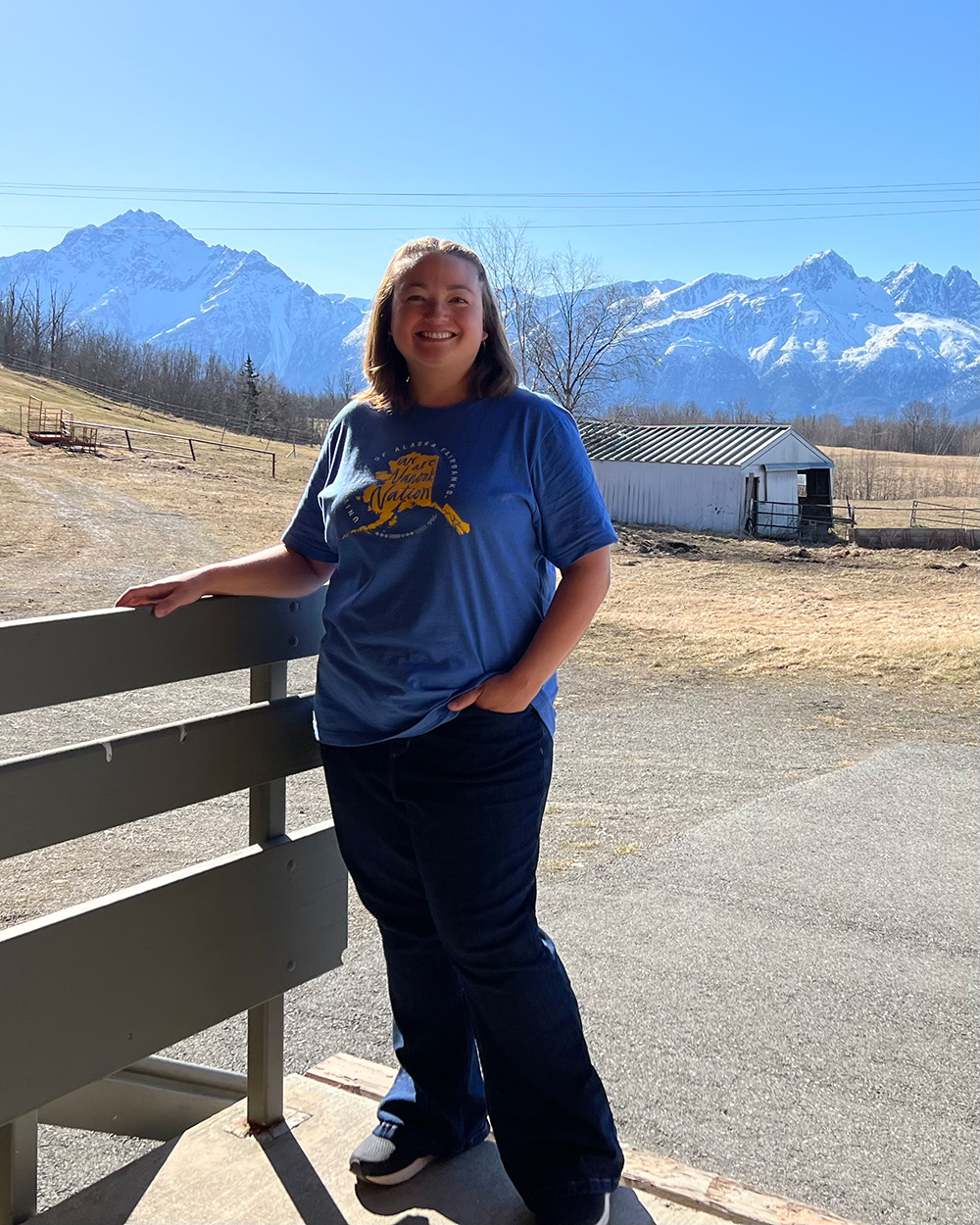Living in the sub-Arctic

Explore Alaska
Adam Rubin, creative director in University Relations, moved to Alaska in January of 2023 and takes advantage of his time off to enjoy road trips like this one to the Chena River Recreation Area. Having experience in time-lapse photography and video, Rubin is putting those skills to use as he documents his adventures around the state.
He's put 30 thousand miles on his truck since moving here from Michigan, going on a different road trip almost every weekend! He encourages employees new to the state to get out and explore. "Alaska is ripe with opportunities but requires more leg work to access those opportunities than states in the Lower-48," said Rubin.
Winter safety in extreme temperatures
Being equipped for cold weather in the Alaska Interior is not optional. Dress for the weather by layering clothing and include hats and gloves, wear appropriate footwear, pack an emergency kit in the car with a blanket, check your vehicle for antifreeze and oil, and maintain at least a half tank of gasoline.
Many employees who live in the Interior of Alaska document their experience with extreme temperatures by having their photo taken at the UAF time and temperature sign.
By the numbers
Alaska has a land area of 570,865.8 square miles and is the largest state in terms
of its size. Read more facts about Alaska.

UAF employees enjoy work in many locations across Alaska
Rebecca Yoder is the new administrative assistant at the Matanuska Experiment Farm and Extension Center in Palmer. She enjoys photography and majored in photojournalism, fiber arts, including crochet, knitting, sewing and embroidery, and also dabbles in painting.
About the Matanuska Experiment Farm and Extension Center
The MEFEC is a working research farm serving Southcentral Alaska. It has 260 acres
of cultivated land and 800 acres of forestland for research or demonstration purposes,
including barns, feed storage facilities and pastureland. The experiment farm has
a complete complement of farm equipment to produce and harvest grain, forage (hay
and silage) and other crops. There are also field and laboratory facilities for research
on soils, plants and livestock.



